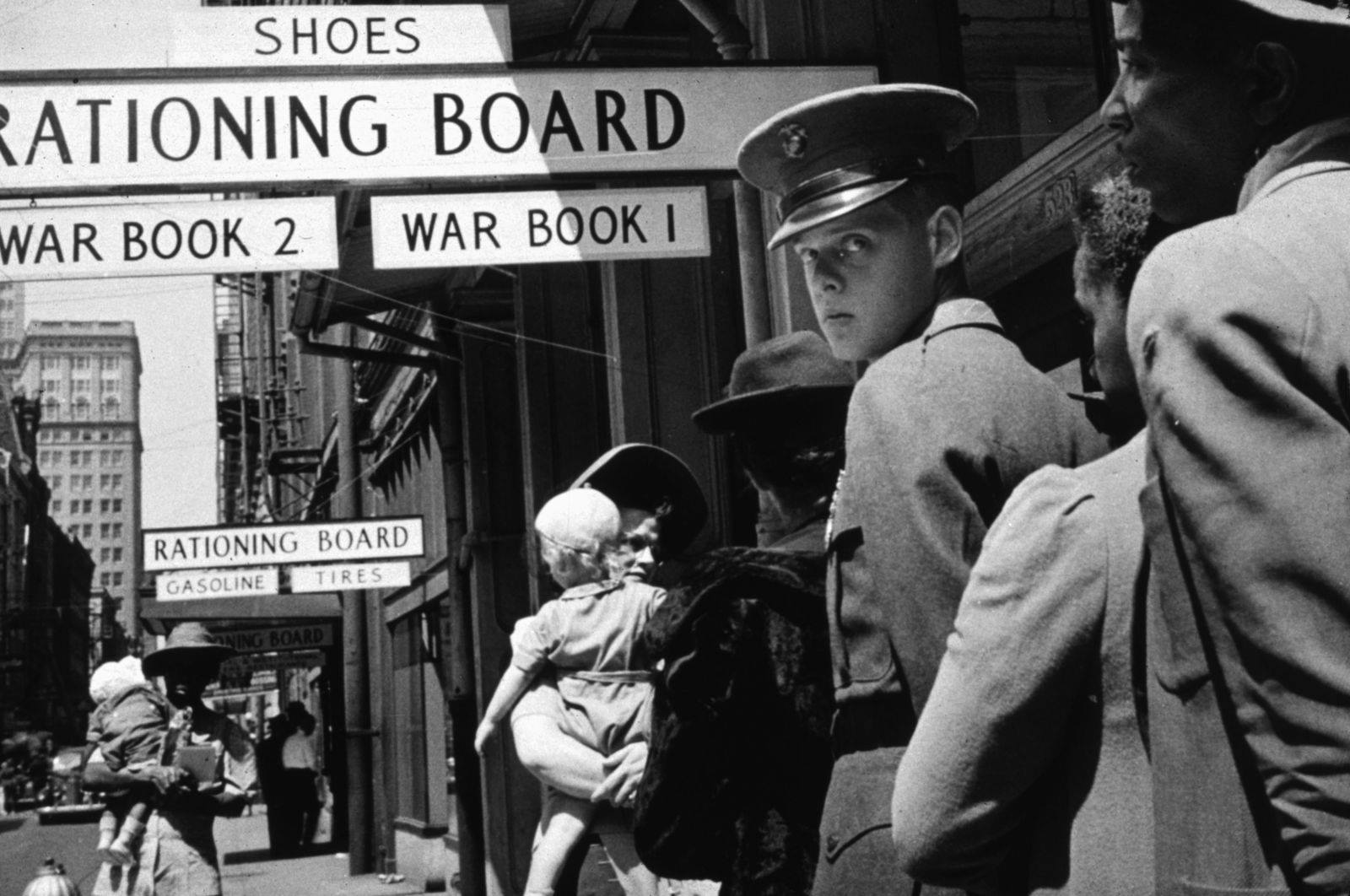Rationing, to help World War II efforts, happened for two reasons under President Franklin D. Roosevelt starting in the spring of 1942: fair distribution of resources and food to everyone and priority for military use. Could you have done without these items for about 3+ years?
Rationing limited items to:
-Three gallons of gas a week (1942-1945). Due to the attacks of German U-boats on U.S. shipping boats and oil tankers, gas was one of the first things to be rationed starting with 17 Eastern States and then moved to the rest of the country. Each car had to display a gas ration stamp on their windshield. Speed limits were set at 35 mph and for a short time in 1943, all pleasure driving was outlawed.
-1 lb of coffee every 5 weeks.
-Butter, cheese, milk, eggs, bacon, lard, and sugar. Each had varying lengths of rationing, with sugar on the list the longest (1942-1947).
-In all, about 1/3 of all food commonly used was rationed at one time or another including canned goods, meats, dried fruits, jams & jellies, and processed foods (canned, bottled, and frozen).
-Nonfood items: typewriters, bicycles, footwear, silk, nylon, stoves, firewood, coal, and tires (rubber shortage).
There was a Black Market for rationed items but, of course, prices were inflated.
